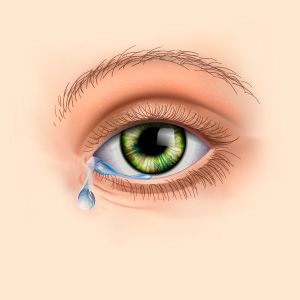 There are a number of physiological and environmental factors that cause your prosthetic eye to tear more than your natural eye. The primary reason you may experience routine eye discharge can be attributed to the anatomy of the anophthalmic, absent eye, socket. Much like the inside of your nose or mouth, the prosthetic eye socket is a contiguous mucus membrane; producing considerably larger amounts of fluid than the natural eye socket.
There are a number of physiological and environmental factors that cause your prosthetic eye to tear more than your natural eye. The primary reason you may experience routine eye discharge can be attributed to the anatomy of the anophthalmic, absent eye, socket. Much like the inside of your nose or mouth, the prosthetic eye socket is a contiguous mucus membrane; producing considerably larger amounts of fluid than the natural eye socket.
Tearing is your body’s natural mechanism for lubricating surfaces, reducing friction, and clearing away debris. To combat the hydrophobic, water repelling, nature of the prosthetic eye material the body must produce more oily tears to increase lubrication and promote normal eyelid function. Over time an oily layer can accumulate on the surface of the prosthesis causing irritation and diminished cosmesis.
To eliminate the build-up of eye discharge on the surface of the prosthetic eye, it is important to follow your ocularist guidelines. Typically this will include a professional polishing and resurfacing appointment every six months with supplemental at home cleaning as needed. To speak with a Los Angeles board certified ocularist about the importance of prosthetic eye polishing, please call (323) 462-6004 or e-mail [email protected]. We would be happy to answer any questions or concerns you may have.

